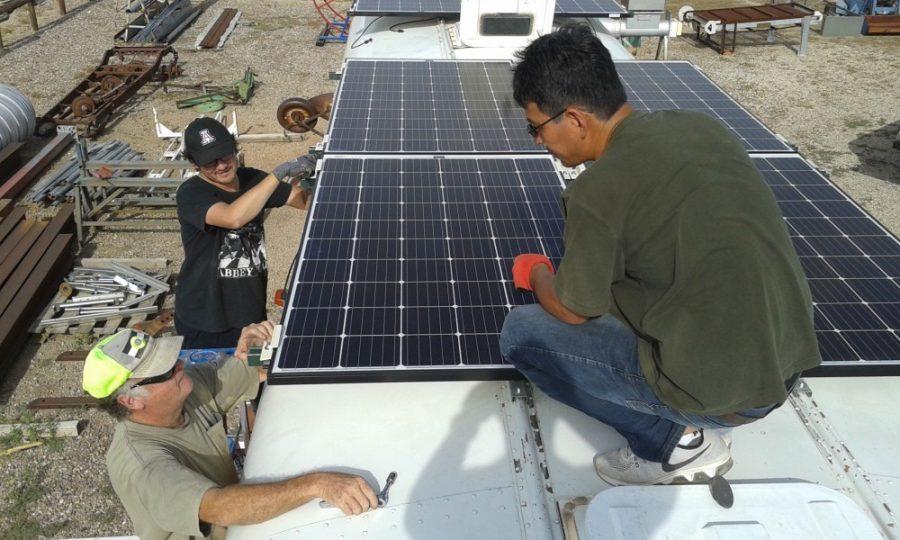The Navajo Nation resides within a very dry region. It gets less than 12 inches of rain a year and the ground water is deep and salty, in addition to containing harmful chemicals like uranium.
That’s where University of Arizona engineers, along with other organizations, have applied their expertise.
UA engineers, Apex Applied Technologies and the Service To All Relations (or STAR) School have implemented an innovative way to deal with the problem in a less expensive way. The solution comes in the form of a solar-powered school bus.
According to STAR School CEO Dr. Mark Sorensen, the inspiration to use desalination techniques came to them during the Standing Rock protests of the Dakota Access Pipeline. Protesters realized they had fresh water on-site and could drink it by evaporating the water first.
“We worked with the Bureau of Reclamation and AATech in order to get funding and development into this project,” Sorensen said. “This is a time of great need for the people in the Navajo Nation, this is a matter of healthcare.”
According to Sorensen, this implementation of engineering and science on the reservation helps the community and sparks people’s interest in science, especially the STAR School students who can apply the science in their daily lives.
RELATED: Navajo Tribal Utility Authority opens new solar plant
“Our school’s motto at STAR School is in its initials which stands for ‘Service to All Relations,’” Sorensen said.
UA engineers use nano-filtration technology to make the ground water drinkable for the Navajo people.
“We started working for the Bureau of Reclamation on water purification,” said Bob Arnold, professor for the UA’s Chemical and Environmental Engineering department. “The technology we are trying to apply is called membrane distillation, [to] actually evaporate water across a membrane.”
The process, known as distillation, removes unwanted minerals to create fresh and drinkable water. UA environmental engineers use the technique to separate salt and uranium from the water.
“It takes a lot of energy to evaporate water, that’s predictable since the evaporation of water is very high,” Arnold said. “We did complete it and produced water by membrane distillation, but it is too expensive to produce energy.”
Once the process of making the water drinkable was determined, the next step was to find a way to power the systems. One alternative that engineers turned to was solar energy.
“They have a lot of sun hours, it is a very privileged region in solar energy,” said Rodolfo Peon, Arid Lands Resource PhD student. “They can also grow their crops using greenhouses, they can use clean water for the livestock.”
According to Peon, using a solar powered energy source is an efficient and affordable way to power the bus’s distillation system. Peon helped with the solar portion of the project, and advised on how big the solar panels could be and how they should be placed to acquire the most energy.
“This really can change the quality of life for the people living there,” Peon said. “The water people have there is not reliable; by using solar water desalination they can have fresh water.”
A desalination bus is not the first idea the Navajo Nation and other aide organizations have had throughout the years. According to Sorensen, the desalination bus is still under ‘prototype’ status and is not fully operational. It still must be taken to the community to provide an opportunity to learn its use and gauge their response.
“The project has been going on for quite a number of years; they’ve been gaining the expertise of getting the nano-filtration systems going and operating them,” said Christopher Yazzie, Master student in Environmental Engineering.
Yazzie grew up on the Navajo reservation, around Tuba City.
“Since I was a kid I have known about the abandoned uranium mines, contaminated aquifers and also the shortage of water and electrical infrastructure there,” Yazzie said. “I can totally see myself working at the reservation with one of the utility companies; this way I can apply the knowledge I’ve gained as a master student to the Navajo Nation and provide helpful resources to them.”
Follow Victor Garcia on Twitter









